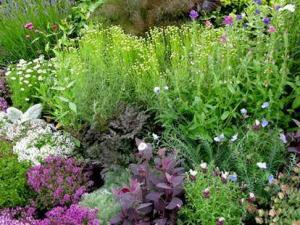 For much of the Northern Hemisphere, it was a long, tough winter. But spring has arrived and, for many of us, that means time to think about the garden. Here are a few plants you might want to cultivate for their health benefits, as well as natural beauty:
For much of the Northern Hemisphere, it was a long, tough winter. But spring has arrived and, for many of us, that means time to think about the garden. Here are a few plants you might want to cultivate for their health benefits, as well as natural beauty:
Aloe (Aloe vera) – A sun-loving evergreen with spiky yellow-orange flowers.
Uses: The “jelly” in the aloe leaves can soothe burns, itches and dry skin.
Trivia: Cleopatra, the last active pharaoh of Ancient Egypt, who reigned from 51-20 B.C., renowned for her intellect and striking beauty, used aloe in her skin regimen.
Lavender (Lavandula angustifolia) – An herbaceous bush with fragrant purple wands.
Uses: Attracts helpful insects, repels rabbits and can be used in cooking. The smell of lavender is lovely, and is used both as a cosmetic scent and a treatment to reduce stress.
Trivia: In Biblical times the Queen of Sheba anointed herself with lavender and other fragrant oils to capture King Solomon’s heart. Queen Victoria drank lavender tea to ease her headaches.
Lemongrass (Cymbopogon nardus) – a graceful ornamental grass with a pleasant smell.
Uses: Mosquito-repelling citronella oils come from this plant. It also lends a citrusy flavor when used as a spice. Lemongrass tea helps relieve coughs and nasal congestion. In Ayurvedic medicine, it’s considered a super-herb, recommended as a tonic for all systems in the body, including the respiratory, digestive, nervous and elimination systems.
Tip: Rub the leaves on your clothing to keep bugs at bay.
Spearmint (Mentha spicata) – A plucky, fragrant green herb with spiky leaves.
Uses: Repels mice, and leaves can settle some stomachaches. Oil cultivated from the plant gives off a pleasant smell.
Trivia: Mint juleps, consisting primarily of spearmint and bourbon whiskey, were prescribed as early as 1784 as a remedy for “sickness at the stomach, frequent retching and, at times, difficulty of swallowing.” (Society for Promoting Medical Knowledge, 1784)
Spider Plant (Chlorophytum comosum) – A favorite, resilient plant for inside or out.
Uses: Helps filter out carbon monoxide, formaldehyde, benzene, xylene (a solvent used in the leather, rubber and printing industries) and other gases.
Trivia: NASA researched spider plants to help purify air on the Space Station.
Sunflower (Helianthus annuus) – A garden favorite with a tall stem and large bright yellow blooms.
Uses: The flower makes for beautiful home decor, and the seeds, a powerhouse of phytochemicals, vitamins and minerals, can be roasted or eaten raw.
Tip: Plant sunflowers to help draw away insects from more delicate plants nearby.
Charles Darwin estimated that good soil has about 53,000 worms in each acre. Taking that down to the garden scale suggests that a 10-by-20 foot backyard garden patch with decent soil has about 250 earthworms. Each worm is capable of producing, over a year, a third of a pound of castings, which works out to 80 pounds of top-quality fertilizer being added to that garden plot every year. It’s free of chemical fertilizers, requiring no transportation from the garden store and no work on the gardener’s part.
Worms don’t ask for much in return for their good work – just plenty of organic matter (from plant cuttings, vegetable and fruit peelings, etc.) and enough moisture to keep them active and healthy. But it’s not a stress-free job. Artificial fertilizers provide no food for earthworms and may repel them because of the high soluble salt content. And worms are prey to other creatures – a favorite high-protein snack for some birds, along with moles and skunks.
All things considered, it’s a beautiful system going on in the soil and worms are the key. If you’ve got good worms, generally speaking, you’ve got good soil.




